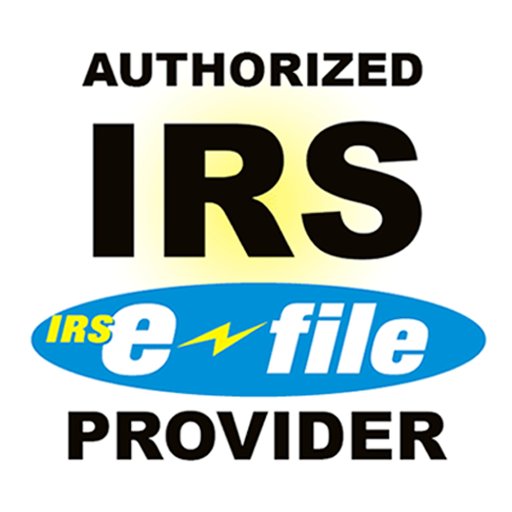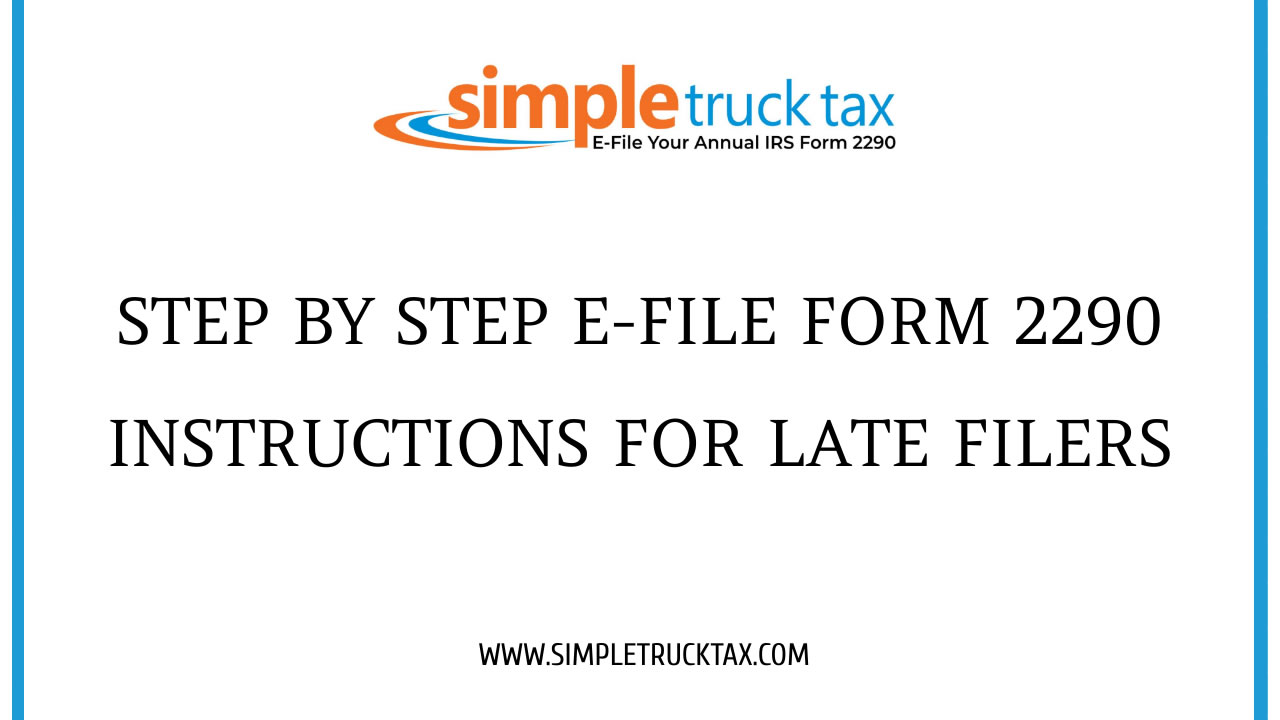10-10-2024
Step by step E-file form 2290 Instructions for Late Filers
Tax filing can be a very stressful activity, especially if you are already running behind schedule. That's why the IRS might have put many of its late filers in a tough spot - because of form 2290, which deals with Heavy Vehicle Use Tax (HVUT). But there's no reason to panic! The IRS e-file form 2290 allows even a late filer to submit their forms very conveniently, efficiently, and rapidly.
In this post, we will break down the step-by-step e-filing instructions for a late filer so that you can quickly file your Form 2290 accurately and get out of the notice list of penalties.
Form 2290 Basics and Why Filing on Time is the Most Important Thing
Form 2290 is required for vehicles that have a taxable gross weight of 55,000 pounds or more and travel on public highways. The tax filing is annual and, for those in service on July 1, due August 31; an unfilled return can result in interest charges and penalties that are imposed upon processing.
However, the IRS accepts e-filing as an effortless way of submitting Form 2290. This not only saves time for late filers but also prevents them from facing complications because of paper filing. Let's see how it works.
Step 1: Gather All Details
Before proceeding with the process of e-filing, make sure all the documents and information are in place. You will need:
- Employer Identification Number (EIN): In this case, you're not permitted to use your SSN, so your EIN has to be valid. If you don't have an EIN, you should immediately apply for one because it may take the IRS a couple of weeks to issue one.
- Vehicle Identification Number (VIN): This is the unique 17-character identification number of your heavy vehicle.
- Gross Taxable Vehicle Weight: This is what your tax will be. Vehicles are taxed according to weight class
- Month First Used: This is the month that you first used your vehicle in this tax year. In the case of late filers, this varies from when the tax normal start period in July begins.
- Payment Method: You can pay your HVUT through EFW, EFTPS, or check/money order. Just choose the best option that works for you.
Step 2: Choose a Safe-Approved E-file Provider
The IRS requires an approved e-file provider if you need to file more than 25 vehicles on Form 2290. You must though, even if you have fewer vehicles, as it is the most efficient method. To begin with, go to the IRS site for picking an approved provider or choose one with whom you already have a relationship.
Compare and contrast the services each provides regarding price and features, adjusting your comparison to suit your needs. For the late filer, speed and efficiency are paramount; make sure the service you choose offers quick submission options with real-time status tracking.
Step 3: Set Up Your Account and Add Your Information
Finally, you should select your provider and, if you are not already registered, sign up for an account. The e-file procedure will guide you on the information needed at the time, including EIN, VIN, and gross weight of a vehicle.
As you file late, make sure the "First Use Month" goes with it to be shown accurately. If the vehicle was used since July but you are filing late, fill in July as the first use month. The system will then calculate the correct amount of taxes for the remaining months in the tax period.
Step 4: Calculate Late Fees and Penalties
Unfortunately, for the late filers, penalties and interest apply. The IRS will charge you 4.5% of your entire tax liability per month you are late for up to five months. Additionally, there might be an interest rate of 0.5% per month for unpaid taxes plus administrative fees.
The e-file system will figure in the penalties, and as long as you know what date you are filing and how much you owe in taxes, it will tell you how much in late fees you owe. Remember to check over the penalties carefully before making your payment.
Step 5: Make Selection for Your Payment
After you've calculated your late fees, you must select how you want to pay your HVUT. The IRS allows several ways to pay:
- Electronic Funds Withdrawal (EFW): The IRS can take the tax automatically from your bank account.
- Electronic Federal Tax Payment System (EFTPS): You must sign up in advance to use this option as a payment.
- Credit or Debit Card: Some service providers allow you to pay through your credit or debit card, and charge a fee determined by your provider.
- Check or Money Order: You can just mail a check or money order to the IRS upon receiving your confirmation notice after you have e-filed your tax form. Make sure to attach the appropriate voucher for easier processing.
Step 6: Submit Your E-File and Get Your Stamped Schedule 1
But after you go through the details, and the payment arrangement is made, you can submit the form through e-filing. The IRS will then receive the Form 2290 through the e-filing system.
Once you've submitted the form and the IRS accepts it, you should receive a copy of Schedule 1, which serves as proof of payment. This stamped Schedule 1 is quite useful in case you need to register your vehicle or prove that you completed the DMV. Even late filers can expect an acknowledgment within 24 hours.
Step 7: Look at Your Filing Status
One of the best advantages of e-filing is that you can trace whether your filing status is complete or pending in real-time. It is especially useful for late filers who ensure that their submission has been processed without any delay. Most e-file providers offer email notifications or dashboards to track the progress of submissions.
If you notice any mistake in your filing, do not hesitate to change it immediately. The IRS may accept minor errors in filings, but serious mistakes may incur further delays or penalties.
Filing Form 2290 can be very stressing, but e-filing with the IRS-approved system can make the process fast and penalty-free. Now, it all depends on picking up things fast and collecting all the details that might be required and then finally settling for an appropriate e-file provider that matches your needs.
E-filing makes the submission process easier. It ensures that processing times are faster, and you immediately get your proof of compliance in Schedule 1. You may be late submitting your tax, but this step-by-step guide will ensure that you meet your tax obligations with ease without incurring another financial debt.
Note: For more information, visit IRS website


